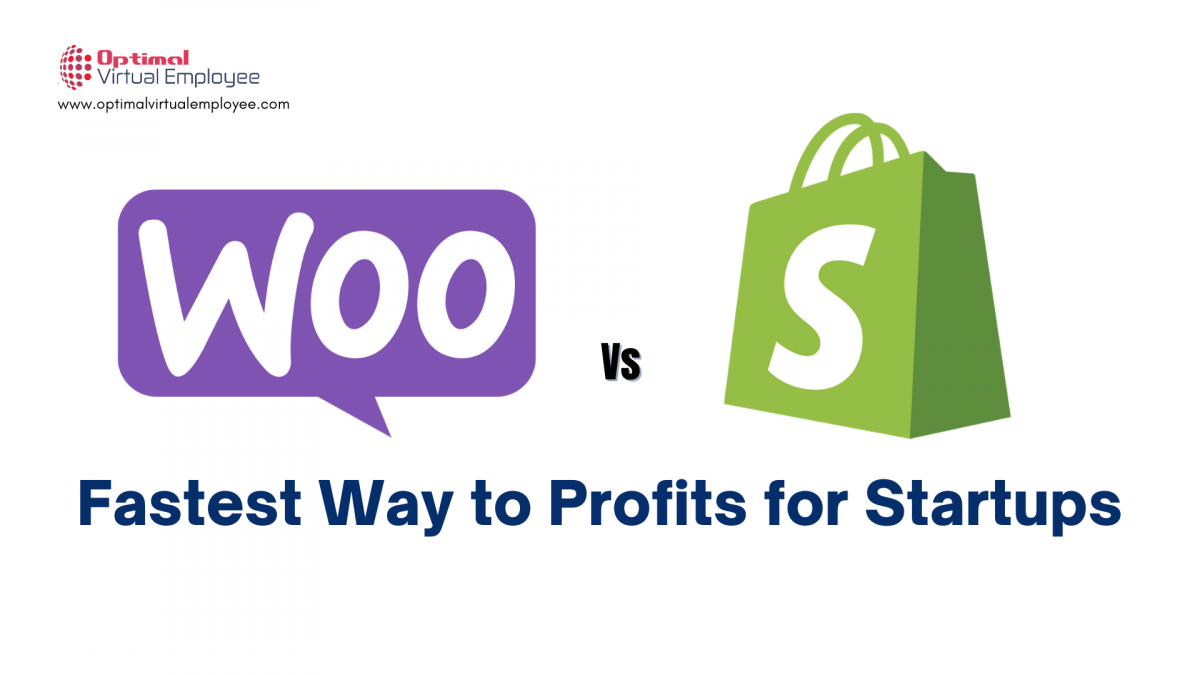When we talk of e-commerce platforms, Shopify and WooCommerce are tough competitors. However, both these platforms offer multiple opportunities to business owners through their in-built traits, which offer robust exposure online. Moreover, they are popular in generating turnovers and revenues quicker than any other eCommerce software.
However, as an entrepreneur, it can be overwhelming to decide the most appropriate eCommerce store builder for generating faster profits. From the outside, both look quite profitable and lucrative. However, for knowing the best fit for your business, you need to delve deeper:
Which can generate faster profits in 2021 for a newly set up business: Woocommerce vs Shopify
-
Shopify VS WooCommerce: Background Themes and Elemental Design
WooCommerce hosts numerous themes, both paid and free. However, the best part is that WooCommerce supports WordPress themes. These themes are based on advantageous features like animated graphics, 3d designs, contrasting color options. On the other hand, Shopify uses a choice of templates for building an eCommerce business website. However, out of 73, only nine are free. These themes are categorized as per the business industry. Besides, each theme can be fabricated in multiple ways according to the chosen elements. There is a Liquid Code feature. Using it, anyone can customize the themes on the built-in theme editorial platform. So, it’s evident that Woocommerce is the winner here.
Faster profits? The way Woocommerce offers a range of capabilities makes it the right fit for eCommerce businesses looking for highly customizable e-stores and having big budgets. Shopify is comparatively cost-effective and a better way to profit from small and young businesses who are building a basic eCommerce MVP and can do without customized theme and design.
-
Shopify VS WooCommerce: Usability
WooCommerce users have to put extra effort into designing the interface of their eCommerce store. Secondly, the security, inventory, updates, and backups need to be managed manually. It offers various plugins to help automate many of such tasks, but they are mostly paid. In the absence of any ready-made fixes, Woocommerce allows complete control over the website to the owners with multiple customization options depending on the budget. On the contrary, Shopify eases the work as it’s a hosted eCommerce tool.
There is no need for putting extra labor into designing the UI or managing the updates as everything can be done automatically. That’s why Shopify doesn’t provide a long list of plugins. Instead, it comes with a drag-and-drop feature for placing the design elements. Even though building the website using Shopify is a piece of cake, you, as the user, will face restrictions while using elements. In addition, you won’t be able to gain full control over the website. And hence, a lot of customizations can’t be introduced. Shopify offers faster development in this case, but Woocomerce gives more control.
-
Shopify VS WooCommerce: Payment methods
WooCommerce hosts only two payment gateways- Paypal and Stripe. These two are used globally. Hence, if you plan to establish an eCommerce business globally, WooCommerce is the most appropriate platform. Here, you can add on other payment methods. But for that, you should outsource an eCommerce expert from India. One of the major advantages of creating an eCommerce website using WooCommerce is its “zero-fee” transactions. If any fee is charged, it will be from the bank’s side and not the tool.
On the contrary, Shopify accepts both global and national payment methods. Therefore, it allows you to integrate multiple payment methods with your business. However, with Shopify, you need to bear a transaction amount that the platform itself will levy. The fee will be imposed on every purchase. Since transaction fees might create problems for bulk orders, choosing a higher monthly plan is better. With higher plans, the per-transaction charge will below.
-
Shopify VS WooCommerce: Security
If we consider the security details, the entrepreneur needs to get 1 the SSL certification while dealing with WooCommerce. Once done, you will have to focus on designing the authentication algorithms, which will be the first layer of defense. For configuring the security plugins, you can use help from a skilled company proficient with WooCommerce app development. Also, you cannot ignore the need to gain the PCI Compliance report. This will make your website visible on various search engines.
Shopify, on the other hand, can be declared the winner in terms of security. Everything is done and managed on the backend. The SSL Certification is free, regardless of the business type. Every security update in the authentication layer will be done automatically. You will always get notifications for any automated update or changes in security layers and codes. Since Shopify integrates card payment gateways, it features the built-in PCI Level 1 Compliance. Hence, no data theft will occur in terms of transaction details.
-
Shopify VS WooCommerce: Sales
If you want to incorporate third-party e-commerce and social media platforms with WooCommerce, it’s doable. But for installing it within your system, you will have to pay around $70 to $80 except for using Facebook. The platform provides free shipping to almost every corner of the world. However, your eCommerce business website must be integrated with the shipping companies. One most lucrative feature of WooCommerce is its one-click refund policy. Customers won’t have to wait for too long to get their money back on returning the purchase.
Shopify is loaded with an “Abandoned Cart Recovery” feature. With this, a customer can pick up an incomplete order from where it was left. No need for repeating the details once again. Another plus point in terms of Sales channels on different platforms is no payment of installation fees. You can integrate the website with Facebook, eBay, Amazon, and others without spending any money. Another major benefit of Shopify is its connections with shipping partners working worldwide.
Final verdict
For those who wish to exercise complete control over the eCommerce business, WooCommerce is certainly the best choice. It has more customization and plugin options for changing the website as per the market trends. But, on the contrary, it is not for people who don’t know the ABCs of designing and managing a website.
It is here Shopify comes to their rescue. This platform might have limited customization options and design elements. But it surely will help you in designing the website with the drag-and-drop feature. Also, all the plugins and add-ons are maintained automatically from the backend. Therefore, Shopify is a better choice for faster eCommerce store development than Woocommerce.
Also Read:
Custom-Built Ecommerce Website vs Shopify, Woocommerce. Which is better in the long run?









